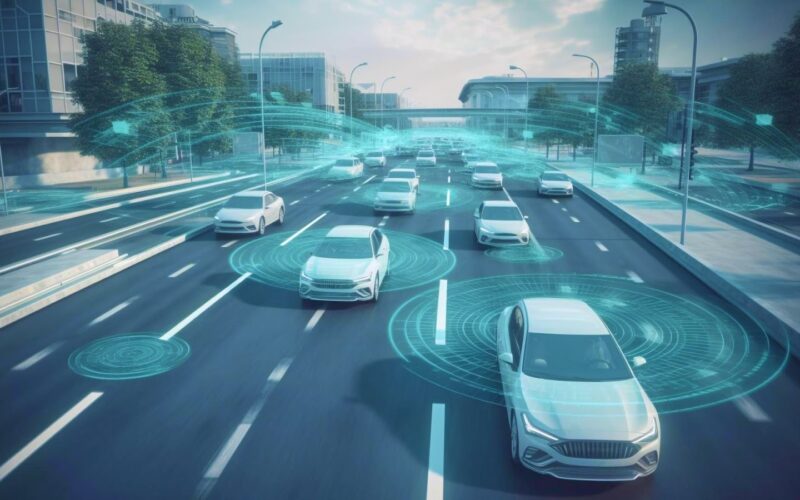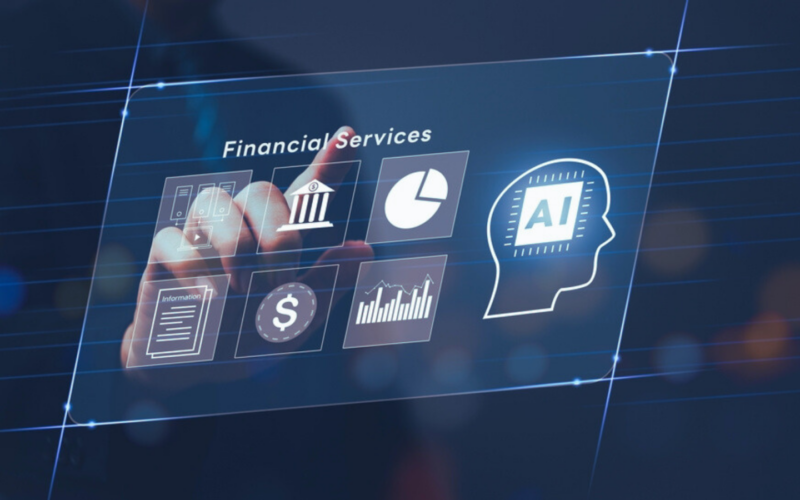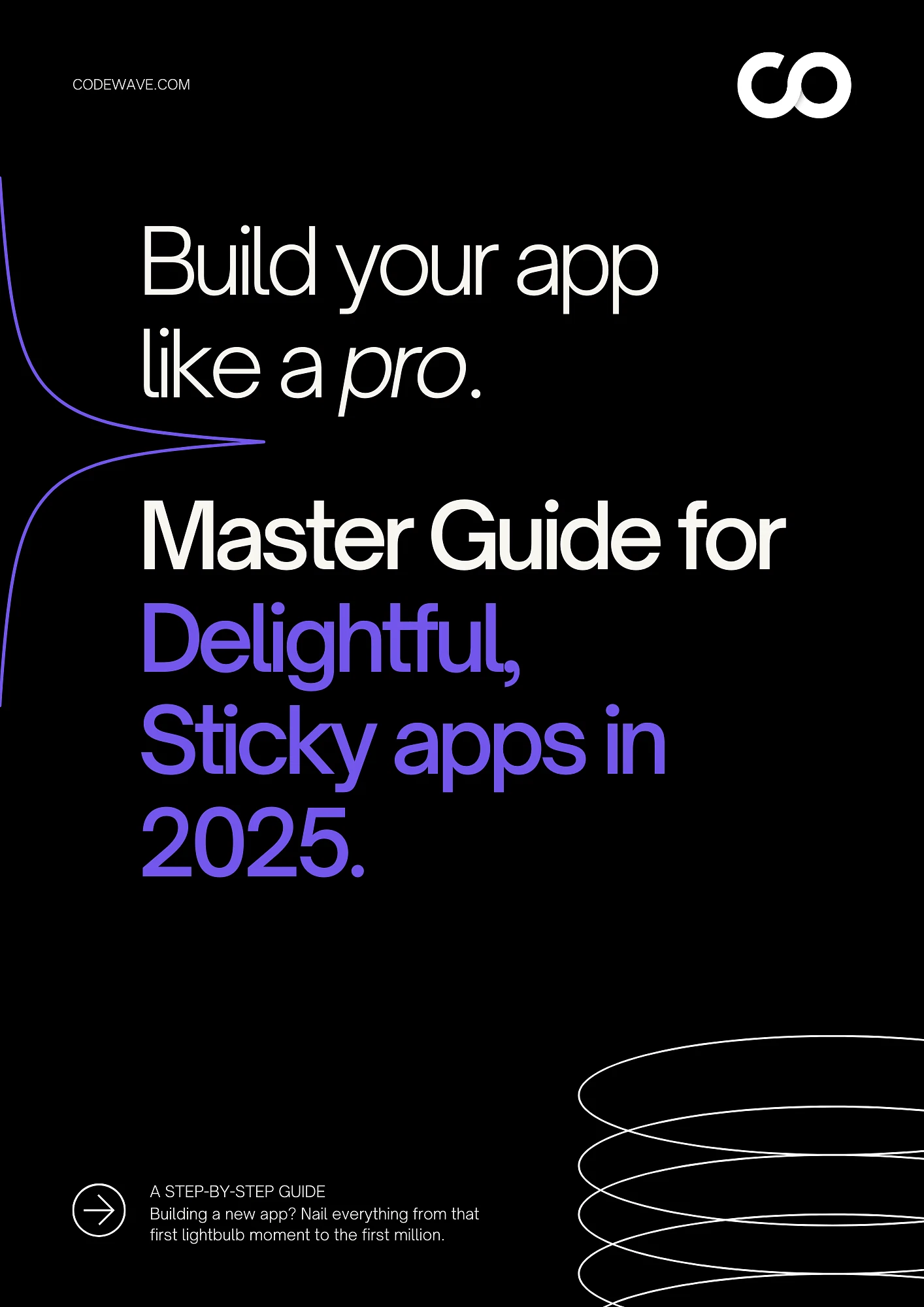You’re managing fleets, fighting delays, juggling demand spikes, and still trying to deliver a smooth experience to every passenger or cargo partner. But let’s be honest: without real-time intelligence, you’re reacting to problems instead of preventing them.
AI in travel and transport is no longer just an idea. It’s the operating system behind more accurate schedules, smarter routes, dynamic pricing, and hyper-personalized passenger experiences. If you’re still relying on traditional tools to manage operations, you’re already behind.
In this blog, we’ll break down how AI is practically transforming the travel and transport sector with real frameworks, tech applications, and business impact. You’ll learn:
- Why do these problems persist
- Where AI fits in to solve them
- What implementation actually looks like
- And how to do it in a way that’s scalable and profitable
Before we go deeper, here’s your TL; DR.
TL;DR (Key Takeaways)
- AI solves fundamental operational inefficiencies in travel and transport, from schedule disruptions to asset under-utilization and low CX scores.
- Predictive maintenance, route optimization, and dynamic pricing are high-impact use cases with fast ROI potential.
- To succeed with AI, businesses need exemplary data architecture, implementation strategy, and integration model, not just off-the-shelf tools.
- Emerging tech like Generative AI and real-time edge analytics is shaping the next wave of intelligent travel systems.
- Companies like Codewave are helping travel and transport leaders move from exploration to execution with custom-built AI solutions and rapid prototyping.
Problem: What’s Holding Travel & Transport Back
You’ve got vehicles, routes, staff, and schedules. But even with all the moving parts in place, things still fall through the cracks. Why?
Most travel and transport systems weren’t built for real-time, data-driven decision-making. They were built for predictability, and predictability no longer exists.
Here are the most pressing problems weighing down the industry:
1. Operational Inefficiencies
- Static routes lead to longer delivery times and higher fuel costs.
- Manual scheduling doesn’t adapt to changes in traffic, weather, or demand.
- Delayed responses to issues like equipment failure or staff shortages increase downtime and customer dissatisfaction.
2. Low Customer Satisfaction
- Generic, one-size-fits-all communication turns passengers into churn risks.
- Missed connections, inaccurate ETAs, and rigid booking experiences frustrate users.
- Lack of personalization in offers, routes, or services reduces retention and loyalty.
3. Rising Costs + Shrinking Margins
- Fuel volatility, labor shortages, and inefficient asset utilization continue to squeeze margins.
- Maintaining aging infrastructure without predictive insights drives up unplanned repair costs.
- Poor forecasting causes overstaffing or under-allocation, both of which burn cash.
4. Compliance, Safety & Sustainability Pressures
- Regulatory requirements around emissions, driver hours, and data privacy are tightening.
- The push for green logistics and eco-conscious travel is forcing businesses to rethink operations without clear frameworks.
These are not just “challenges,” they’re profit killers. And while the industry has long tried to patch them with manual tweaks and software silos, those fixes no longer scale.
So what’s causing the resistance to change? That’s up next.
Cause Analysis: Why These Problems Persist
If the problems in travel and transport are so obvious, why are they still unresolved?
Because underneath the visible symptoms, such as missed schedules, rising costs, and frustrated passengers, are structural issues that can’t be fixed by surface-level tech upgrades or yet another dashboard. The real challenges are systemic, and AI can only help if the systems in place are ready for it.
1. Legacy Systems That Weren’t Built for Modern Demands
Many travel and logistics companies still rely on old infrastructure – systems designed for stability, not flexibility. These outdated systems are often slow to adapt to new technologies like AI, creating barriers to progress.
2. Data Overload Without Actionable Insights
The issue isn’t that companies don’t have enough data; they have plenty. The real problem is that without AI, this data often just sits there, unused or analyzed too late to make a difference. AI can turn this data into actionable insights in real-time, but many companies haven’t integrated AI systems to make that happen.
3. Lack of Skilled AI Teams
AI isn’t failing because the technology isn’t ready. The challenge lies in the fact that many companies lack the right talent to make AI work effectively. Building AI systems requires skilled teams with deep expertise, and without them, AI projects often don’t succeed.
4. Regulatory Challenges in an AI-Driven World
The travel and transport industries deal with complex regulations around safety and personal data. Introducing AI into this mix creates additional uncertainty, especially as regulations around AI and automation are still developing. Companies need to understand these rules carefully.
5. No Clear Link Between AI Investment and Returns
Many AI projects in the travel industry stall because there’s no clear plan for measuring success. Without a solid use case, measurable goals, and support across the organization, AI investments may fail to deliver results. Even the best technology can’t succeed if it doesn’t have the right context or resources to thrive.
The takeaway? AI isn’t failing the industry; the approach to AI is.
To have more ideas about AI applications, check out our Everyday AI Use Cases and see how AI is already making a difference across industries.
Next, let’s get tactical and explore exactly how AI is solving these issues in high-impact areas of travel and transport.
Solution: How AI Is Solving These Problems
Today, AI is embedded in the systems that move people, packages, and planes. The real challenge isn’t what AI can do, but choosing the proper use cases that align with your business model, data maturity, and operational complexity.
Here’s how AI is delivering clear, measurable wins across the industry:
1. Route Optimization and Dynamic Scheduling
Traditional route planning is static; it assumes that conditions will remain constant. They rarely do. AI flips this model by ingesting real-time variables:
- Traffic data from GPS and city infrastructure APIs
- Weather forecasts
- Fuel prices
- Road closures, accidents, and construction updates
- Live vehicle health metrics
How it works:
Machine learning frameworks and models, often built on reinforcement learning or graph optimization techniques, dynamically compute the most efficient route not only for one vehicle but also for entire fleets.
Business impact:
- Reduced fuel costs
- Increased on-time delivery rates
- Lower driver overtime and resource wastage
2. Predictive Maintenance with Sensor Data
Breakdowns aren’t just costly, they’re brand-damaging. Especially in public transportation or freight, a single mechanical failure can lead to multi-hour delays and financial penalties.
What AI does:
Utilizing edge computing and real-time sensor data (including temperature, vibration, fluid levels, and brake usage), AI models can predict component wear or failure before it occurs.
Model types used:
- Time series anomaly detection
- Predictive regression using IoT telemetry
- Event-driven classification models
Business impact:
- Maintenance costs reduced
- Unplanned downtime drops
- Better asset lifecycle management
3. Dynamic Pricing and Revenue Optimization
Whether it’s airfare, ride-sharing, hotel rooms, or freight rates, pricing is never static. AI enables companies to move from fixed rates to intelligent pricing models that respond to:
- Real-time demand
- Competitor pricing
- Booking trends
- Time of day/week/month
- Customer segmentation (e.g., loyalty status)
Tools involved:
- Demand forecasting with LSTM or Prophet models
- Price elasticity modeling
- Real-time A/B testing of pricing strategies
Business impact:
- Increased revenue per seat/mile/unit shipped
- Reduced last-minute overstocking or underselling
- Smarter discounts based on intent, not guesswork
4. Hyper-Personalized Customer Experience
Personalization today goes beyond “Hi [First Name]”. It’s about anticipating needs and not reacting to them.
What AI enables:
- Intelligent travel assistants that can plan, rebook, and resolve queries autonomously
- Context-aware notifications (gate changes, transport delays, rerouting suggestions)
- Intelligent recommendations: routes, seats, in-transit upgrades, rest stops, hotel combos
Powered by:
- NLP + GenAI for chatbots and agents
- Behavioral clustering for recommendations
- Real-time analytics pipelines
Business impact:
- Lower support center load
- Higher CSAT scores and NPS
- Boost in upsell/cross-sell conversion rates
5. Operational Decision Support Systems
AI helps managers make faster, smarter decisions by unifying fragmented data and flagging critical issues. Here are some example use cases:
- Real-time alerts for fleet delays with root cause diagnostics
- Labor allocation optimization during demand surges
- Incident response prioritization using ML triage models
Tools used:
- Stream processing (Apache Kafka, Flink)
- Real-time dashboards built on AI recommendations
- Hybrid decision support systems combining rules + ML
Business impact:
- Better day-of operations control
- Shorter decision cycles
- Fewer human errors during peak load
6. Sustainability and Carbon Optimization
With ESG mandates tightening, AI is being used to:
- Optimize routes based on fuel burn and emissions, not just time
- Track and report Scope 1, 2, 3 emissions across logistics networks
- Simulate the impact of fleet upgrades or greener fuels
Impact:
- Better compliance reporting
- Tangible carbon reductions
- Brand value with eco-conscious consumers
In short, AI is all about what’s profitable. From the front-end booking experience to backend operations, it’s changing how the travel and transport industry thinks, reacts, and scales.
But knowing what’s possible is only half the story. Up next — let’s see how to actually implement these AI solutions without wasting time or budget.
Implementation: How You Can Deploy AI in Your Travel or Transport Business
If you’re in travel or logistics, chances are you’ve been pitched AI more than once, flashy dashboards, intelligent assistants, maybe even “autonomous optimization.”
But the reality is that most AI initiatives stall before they can create a real impact. Not because the tech doesn’t work, but because implementation is treated as a product, not a process.
Here’s how to roll out AI with a clear strategy, minimal risk, and measurable results.
Step 1: Audit Your Operations and Data Readiness:
Before building anything, assess what you already have:
- Where does your data live? Spreadsheets? Legacy ERPs? Disconnected apps?
- Is it real-time, semi-structured, or static?
- Are your operational processes digitized or still manual?
- What KPIs actually matter to your team? Fuel costs? On-time rates? Churn?
Key tools:
- Data audit frameworks (e.g., DMM, DAMA)
- API mapping tools
- ETL/ELT pipelines (e.g., Fivetran, Airbyte) for data normalization
Step 2: Identify the Right Use Cases (Start Narrow, Go Deep):
Avoid trying to “AI everything.” Instead, pick one high-friction, high-impact use case where AI can deliver value quickly. For example:
- Reducing unplanned maintenance downtime
- Improving route efficiency during peak hours
- Personalizing rebooking or customer support with NLP
How to choose:
- Map the cost of inaction
- Estimate the ease of data access and model training
- Define business success metrics (e.g., SLA compliance, CSAT improvement)
Step 3: Choose the Right Stack:
Don’t get locked into a black-box platform that limits your future flexibility. You need an AI stack that’s:
- Composable: Can plug into your existing systems
- Explainable: You can interpret why a model made a decision
- Scalable: Can grow from a pilot into full deployment without rebuilding.
Examples of tech to consider:
- Data & pipelines: Snowflake, BigQuery, AWS Glue
- ML Ops: MLflow, Kubeflow, TFX
- Serving & inference: FastAPI, TensorFlow Serving, Triton
- Monitoring: EvidentlyAI, WhyLabs, Grafana
Step 4: Build, Test, and Iterate:
Once your use case and architecture are ready:
- Start with a small, closed-loop test environment
- Use historical data to simulate model behavior
- Run A/B tests in parallel with human decision-making for validation
- Document all assumptions, model parameters, and error scenarios
This is where most AI projects die because people skip testing.
Step 5: Measure What Matters
Your model can be 96% accurate and still deliver zero business value. Instead of just model metrics (precision, recall), focus on:
- Operational KPIs: Reduced idle time, fuel savings, and booking conversion rate
- Time-to-insight: How fast does the system make a decision?
- Cost per decision: Is it scalable, or does it require human review at every turn?
Build dashboards that connect AI output to financial outcomes, so leadership stays aligned.
Step 6: Train Teams and Embed AI into Operations
AI doesn’t work in isolation. Your ops teams need:
- Interfaces they can trust (and understand)
- Clear escalation paths when models fail or break
- Ongoing feedback loops to refine accuracy
Codewave often uses Design Thinking services to co-create these workflows with your team — so adoption feels native, not disruptive.
Step 7: Scale with Confidence (After Proof of ROI)
Once the initial use case delivers results, it’s time to expand:
- Deploy across more routes, regions, or customer segments
- Automate adjacent decisions (e.g., staffing, fleet rotation)
- Consider building a custom AI platform for internal innovation
At this stage, many businesses shift from buying off-the-shelf AI to owning their own AI IP — trained on their data, optimized for their logic.
Not sure where to start? Codewave offers AI audit, strategy consulting, and prototype development — often within a week — to help you go from idea to validation, fast.
From building ML-driven route optimizers to real-time analytics dashboards, we embed intelligence into your workflows. Discover our AI services or explore our portfolio to see actual transformations in action.
Challenges Faced & How to Mitigate Them
Every executive interested in AI hits the same internal wall: “What’s the risk?” And it’s the right question to ask.
AI in travel and transport comes with its own set of friction points — some technical, some cultural, some strategic. But most of these aren’t deal-breakers. They’re solvable if you prepare for them early.
Here are the biggest blockers and how to navigate them:
1. Data Privacy & Compliance: AI systems touch sensitive customer and operational data. Poor data governance invites compliance risks and erodes trust.
Mitigation:
Use anonymization, encrypted pipelines, and compliance-ready tools. Stick with partners who build with privacy in mind.
2. Legacy System Compatibility: Old platforms weren’t built for AI. Trying to connect modern intelligence to outdated systems often creates more issues than it solves.
Mitigation:
Bridge gaps using APIs and middleware. Run AI in parallel to start. Upgrade systems incrementally, not all at once.
3. Skills Gaps & Resistance: AI fails when teams lack understanding or trust in it. Resistance builds if the tools feel complex or irrelevant.
Mitigation:
Train teams early. Keep models interpretable. Start with simple, visible use cases to build internal buy-in.
4. Fuzzy ROI & Weak Sponsorship: Without clear metrics, AI appears to be a cost, not a win, that stalls funding and support.
Mitigation:
Tie AI to real KPIs. Use fast-cycle prototypes to show early impact. Involve business and ops leaders from day one.
5. Model Bias & Black-Box Decisions: If AI makes decisions users can’t explain, it breaks trust – especially in high-impact areas like pricing or routing.
Mitigation:
Use transparent models. Audit regularly for fairness. Keep humans in the loop until systems prove reliable.
These aren’t blockers but planning checkpoints. Handle them well, and AI becomes a scalable advantage, not a stalled experiment.
At last, let’s explore where AI in travel and transport is headed and what to prepare for in 2025 and beyond.
Emerging Trends: What’s Next for AI in Travel and Transport
AI in travel and transport is quickly becoming operational infrastructure. What you build today determines how agile, efficient, and resilient your systems will be in the next 18 to 36 months.
Here’s what’s already reshaping the industry and what decision-makers should start preparing for.
1. Generative AI Will Reshape Customer Experience at Scale
Filters or forms won’t trigger the next phase of travel personalization. It’ll be driven by AI agents that understand traveler intent, constraints, and context.
- Airlines and OTAs are testing AI copilots that design itineraries, rebook connections, and handle complex support requests without escalation.
- These systems pull from real-time inventory, policies, weather data, and even personal travel history, crafting human-grade interactions in milliseconds.
2. AI-Driven Autonomy in Ground Operations & Logistics
Fully automated vehicles still face regulatory hurdles, but AI and its use in autonomous vehicles are already making decisions inside transport ecosystems.
- Airport ground ops are using computer vision to reduce luggage misrouting and minimize turnaround delays.
- Logistics firms are deploying AI-assisted driver routing that adapts mid-route based on roadblocks, fuel efficiency models, or last-minute customer requests.
3. Carbon Intelligence as a Competitive Lever
Sustainability is no longer just a reporting checkbox. It’s becoming a cost driver and a customer preference.
- Companies are using AI to simulate the carbon impact of various transport configurations, then optimize based on emissions — not just cost or time.
- Route planning engines are being rebuilt with carbon scoring, and freight customers are asking for “green delivery” options.
4. Edge AI Will Unlock Ultra-Fast, On-Site Decisioning
In high-velocity environments, such as transit hubs or warehouses, cloud latency becomes a bottleneck.
- AI models are being deployed directly on local hardware, from in-vehicle edge devices to smart kiosks, enabling split-second responses without needing to query the cloud.
- This enables use cases such as real-time fare adjustments, smart gate allocation, live demand redirection, and safety monitoring.
5. AI Governance Will Become a Non-Negotiable
The more AI systems shape routes, prices, and decisions, the more they’ll be scrutinized legally and ethically.
- Enterprises will need to audit AI behavior, explain how models arrive at decisions, and prove those decisions are fair and safe.
- This isn’t just for customer-facing apps. Even backend logistics and maintenance systems will face accountability demands from regulators, insurers, and partners.
The early adoption window is closing. Companies that treat AI as an asset, not a plugin, will shape the future of mobility, customer experience, and operational scale.
Ready to harness the power of AI? Codewave’s AI Solutions Development Services deliver custom, data-driven applications that enhance efficiency, drive innovation, and provide actionable insights. Start your AI transformation with us today!”
Now, let’s connect all this back to how Codewave delivers with services, strategy, and systems built for business outcomes.
How Codewave Can Be Your Strategic Partner for AI in Travel and Transport?
If you’re in travel or transport, you’re not short on data, tools, or tech pitches. What’s missing for most companies is a clear path from idea to impact.
You’ve seen what AI can do. But turning that potential into results isn’t about having the right software but having the right plan, the right build, and the right people behind it.
That’s where Codewave fits in.
We don’t just hand you an AI model and walk away. We help you figure out where AI fits, how to implement it without disrupting operations, and how to prove it’s working — fast.
Here’s how we help:
- Built Around Your Business:
We design systems that fit your processes, not the other way around. You get AI that works with your existing tools, teams, and workflows. - Fast Prototyping, No Guesswork:
Our “Done-in-a-Week” AI prototypes help you test ideas quickly and move forward with confidence. - No Vendor Lock-In, No Black Boxes:
Everything we build is transparent, scalable, and explainable. You own the outcomes, not just the code. - Actual Results, Not Just Dashboards:
Whether it’s reducing delivery delays, saving fuel, or improving customer satisfaction, we track what matters, and we show you the impact.
If you’re serious about applying AI, let’s talk. We’ll help you map out what’s possible, where to start, and how to move forward with clarity.
Book a free strategy session & consultation with our team, and let’s get real work done!
FAQs
1. How much initial data do you really need before starting an AI project in transport?
You need sufficient historical and real-time operational data to obtain meaningful insights, such as vehicle usage logs, sensor/telemetry data, routes, and traffic/weather information. A pilot can start with a subset (say, 3‑6 months) of clean, high‑quality data to train models and validate hypotheses.
2. Can small fleets (under 50 vehicles) see ROI from AI, or is it only for large operators?
Yes. Smaller fleets can often get quick wins via use cases like predictive maintenance or route optimization, which don’t require massive scale. The trick is choosing the right pilot, minimizing overhead, and ensuring the solution is lean and targeted.
3. How do you ensure AI adapts when external conditions change (e.g., fuel prices, regulation, weather)?
Build models with feedback loops: continuously monitor their performance, retrain when accuracy drops, and feed in new variables (e.g., weather, cost inputs) as features. Use modular systems so you can swap or adjust components without a complete redesign.
4. What are realistic timeframes to go from pilot AI use‑case to organization‑wide deployment?
For well‑scoped use cases (like route optimization or maintenance alerts), a pilot might deliver results in 4‑12 weeks. Scaling to full deployment (all fleets, regions) usually takes several months more, depending on complexity, integrations, and stakeholder buy‑in.
5. How do you balance trust in AI systems among operations staff who may see technology as a threat?
Start by involving operators (dispatchers, drivers) early in defining the AI outputs. Use explainable models or visual dashboards to show why the system makes recommendations. Position AI as augmenting their work (reducing manual load, faster decision‑making), not replacing people.
Codewave is a UX first design thinking & digital transformation services company, designing & engineering innovative mobile apps, cloud, & edge solutions.







